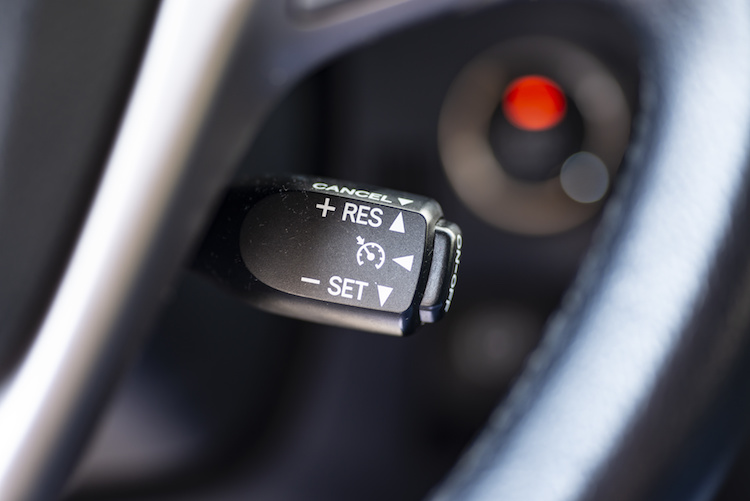Anyone who has ever had to drive a long stretch of desert highway certainly understands the value of the cruise control in their vehicle. With a flip of the switch, you can relax your driving leg and let the car do the work. No doubt, a modern feature in our vehicle that we might take for granted. Believe it or not, cruise control has been around for about 80 years! While cruise control is not an auto pilot – it is a function of our vehicle that provides us with the convenience of maintaining a safe driving speed while helping lower our fuel consumption. When it doesn’t work properly, you need to schedule cruise control repair.
How Does Cruise Control Work?
The primary function of cruise control is to mirror what we are doing while driving, which is depressing or letting up on the accelerator in order to control the speed of the vehicle.
Today’s vehicles with cruise control use a system of cables that are powered by actuators (a type of electric motor that produces an action). These cables are connected to the throttle and can control the flow of air into the engine to either maintain a speed, speed up, or slow down.
In the most recent vehicle models, cruise control operates through wireless technology that controls these command signals to the engine’s computer. Many vehicles are now equipped with more advanced cruise control systems with a feature called adaptive cruise control. Adaptive cruise control maintains a safe driving distance between you and the other vehicles in front of you on the highway.
What Causes Cruise Control to Malfunction?
For the most part, cruise control functions without problems. However, there are some things that can go wrong requiring cruise control repair. The majority of the time, problems that arise with the vehicle’s cruise control system are a result of failure with supporting components of the system.
Here’s a list of the most common issues you may experience with your vehicle’s cruise control:
- Actuator: There are some actuators in older model vehicles that use vacuum pressure and sometimes the vacuum may leak. A leaky vacuum actuator will cause the cruise control to malfunction.
- Control: If the switches or wiring from your onboard controls to the system are faulty, your cruise control may not work. There could be a short in a wire or a defective switch that prevents the signal from reaching the internal components.
- Electrical: A safety feature of cruise control systems is the brake pedal. Depressing the brake pedal disables the cruise control and relinquishes control back to the driver. If a cruise control system is unable to detect a brake light signal, it may malfunction. Or, sometimes the actuator fuse or relay may be blown or faulty, resulting in the cruise control malfunctioning.
- Other Issues: If for any reason a CHECK ENGINE light is activated, this will most likely disable your cruise control. Additionally, sometimes the vehicle’s speed sensor may not be able to measure your vehicle speed, and will shut off the cruise control system.
How Can You Keep Your Cruise Control Running Smoothly?
There is not a lot you can do to specifically maintain your cruise control system. But since it is tied to other functions of your vehicle, general vehicle maintenance is important to the overall health of your cruise control system.
If you notice any issue with your cruise control, make sure to have it examined by the automotive specialists at Campus Repair in Ft. Collins, Colorado. Make an appointment today for a full review of your vehicle cruise control and recommendations on repairs.

